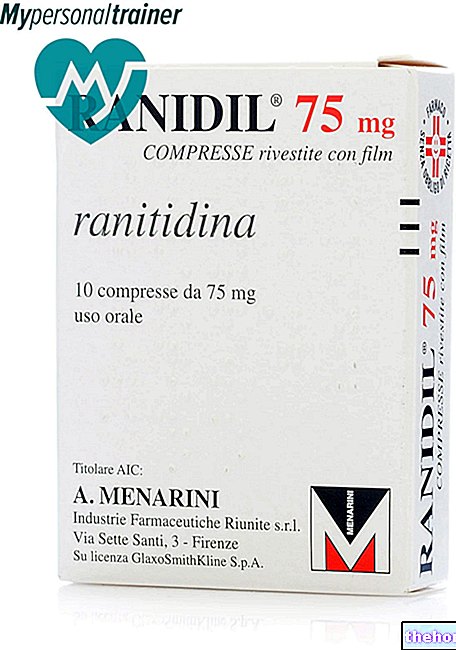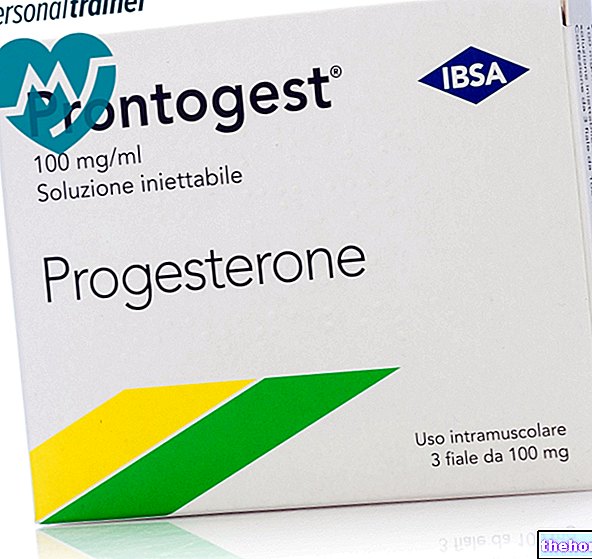Active ingredients: Flavoxate, Propiphenazone
CISTALGAN 200 mg + 250 mg coated tablets
Why is Cistalgan used? What is it for?
ACTIVITIES
Cistalgan combines the properties of Flavoxate, which has an intense antispasmodic activity on the genitourinary district, with those of Propiphenazone, a substance with a remarkable analgesic and anti-inflammatory action.
INDICATIONS
- Treatment of symptoms: dysuria, urgency, nocturia, suprapubic pain, incontinence in bladder and prostate affections such as cystitis, cystalgia, prostatitis, urethritis, urethrocystitis, uretrotrigonitis.
- Adjuvant in the analgesic-antispastic treatment of kidney and ureteral stones and urinary spastic pain disorders caused by catheterization and cystoscopy. Sequelae of surgery on the lower urinary tract.
- Treatment of spastic-painful states of the female genital tract such as: pelvic pain, dysmenorrhea, hypertonia, uterine dyskinesias.
Contraindications When Cistalgan should not be used
Pyloric or duodenal obstruction, obstructive intestinal lesions or ileus, achalasia, gastrointestinal bleeding.
Decompensated obstructive uropathies of the lower urinary tract.
Allergy to pyrazolones, granulocytopenia, acute intermittent porphyria, glucose-6-phosphate dehydrogenase deficiency.
Precautions for use What you need to know before taking Cistalgan
Although the product does not perform an "appreciable anticholinergic action, caution is advised in patients with glaucoma.
Interactions Which drugs or foods can modify the effect of Cistalgan
Pyrazolone derivatives can accentuate the effects of alcohol and can interact with phenytoin, with some oral hypoglycemic agents (tolbutamide, chlorpropamide, acetohexamide) and anticoagulants (Warfarin).
Warnings It is important to know that:
Although the product does not perform an "appreciable anticholinergic action, caution is advised in patients with glaucoma.
Due to its content in Propiphenazone, Cistalgan, in high and prolonged doses, can sometimes cause hypersensitivity phenomena that can manifest themselves in the form of skin and mucous membrane changes, as well as a reduction in the number of leukocytes in the blood and, in very rare cases, of an agranulocytosis.
In the event of unusual dysaesthesia or changes in the skin or mucous membranes, it is necessary to suspend the preparation and consult the doctor.
Any red coloring of the urine that appears during treatment may be due to the elimination of a harmless metabolite of the pyrazolone derivatives, rubazonic acid and is not pathological.
Those who drive cars or who work on machines or who carry out activities requiring alertness must be warned of possible side effects such as drowsiness, blurred vision.
In hypersensitive subjects to aminophenazone and its derivatives, high and prolonged doses of the product can cause damage to the blood.
The pyrazolone derivatives can accentuate the effects of alcohol, of which simultaneous administration is not recommended and can interact with phenytoin, with some oral hypoglycemic agents (tolbutamide, chlorpropamide, acetohexamide) and anticoagulants (Warfarin).
Although animal tests have not shown harmful effects on the fetus, caution should be exercised in pregnancy, especially in the first trimester. Pyrazolone derivatives, in the usual dosage, pass only in minimal quantities into breast milk. Use caution in breastfeeding.
Dosage and method of use How to use Cistalgan: Dosage
The use of the product is limited to adults.
Generally 1 tablet of Cistalgan 2-3 times a day at regular intervals, depending on the intensity of the painful symptoms.
The oral preparation must be taken on a full stomach.
Do not exceed the prescribed doses and therapy times without consulting your doctor.
In the treatment of elderly patients, the posology must be carefully established by the doctor who will have to evaluate a possible reduction of the dosages indicated above.
Overdose What to do if you have taken too much Cistalgan
No cases of overdose reported
Side Effects What are the side effects of Cistalgan
Occasionally in some patients it may cause nausea or vomiting, (which are reduced by ingesting the product on a full stomach) or slight drowsiness (which subsides by further distancing the doses), dry mouth, visual or accommodation disturbances, increased tension ocular, dysuria, tachycardia, palpitations.
Due to the presence of Propifenazone, gastrointestinal disorders, hypersensitivity phenomena affecting the blood (leukopenia, rarely agranulocytosis), hypersensitivity phenomena affecting the skin and mucous membranes (skin rashes etc.) are possible, as well as, in very rare cases, anaphylactic phenomena.
NOTIFY YOUR DOCTOR OR PHARMACIST OF ANY UNDESIRABLE EFFECTS NOT DESCRIBED IN THIS PACKAGE LEAFLET.
Expiry and Retention
Check the expiration date on the package
Do not take the medicine after this date has passed.
STORAGE PRECAUTIONS
None
Composition and pharmaceutical form
Coated tablets:
Each tablet contains:
Active principles:
Flavoxate 200 mg
Propiphenazone 250 mg
Excipients:
Carboxymethyl starch, polyvinylpyrrolidone, microcrystalline cellulose, talc, magnesium stearate, shellac, castor oil, gelatin, gum arabic, precipitated silica, magnesium carbonate, titanium dioxide, spermaceti, sucrose.
PRESENTATIONS
Box of 30 tablets containing: Flavoxate 200 mg + Propiphenazone 250 mg
Source Package Leaflet: AIFA (Italian Medicines Agency). Content published in January 2016. The information present may not be up-to-date.
To have access to the most up-to-date version, it is advisable to access the AIFA (Italian Medicines Agency) website. Disclaimer and useful information.
01.0 NAME OF THE MEDICINAL PRODUCT
CISTALGAN
02.0 QUALITATIVE AND QUANTITATIVE COMPOSITION
Coated tablets.
Each tablet contains:
Active principles:
Flavoxate 200 mg.
Propiphenazone 250 mg.
Suppositories:
Each suppository contains:
Active principles:
Flavoxate 200 mg,
Propiphenazone 1000 mg.
03.0 PHARMACEUTICAL FORM
Coated tablets. Suppositories.
04.0 CLINICAL INFORMATION
04.1 Therapeutic indications
Treatment of symptoms: dysuria, urgency, nocturia, suprapubic pain, incontinence in bladder and prostate affections such as cystitis, cystalgia, prostatitis, urethritis, urethrocystitis, uretrotrigonitis. Adjuvant in the analgesic-antispastic treatment of kidney and ureteral stones and urinary algic-spastic disorders from catheterization and cystoscopy. Sequelae of surgery on the lower urinary tract. Treatment of spastic-painful states of the female genital tract such as: pelvic pain, dysmenorrhea, hypertonia, uterine dyskinesias.
04.2 Posology and method of administration
The use of the product is limited to adults. Generally 1 Cistalgan tablet 2-3 times a day or a Cistalgan suppository 1-2 times a day at regular intervals, depending on the intensity of the painful symptoms. The oral preparation must be taken on a full stomach. Do not exceed the prescribed doses and therapy times without consulting the doctor. In the treatment of elderly patients, the dosage must be carefully established by the doctor who will have to evaluate a possible reduction of the dosages indicated above. .
04.3 Contraindications
Pyloric or duodenal obstruction, obstructive intestinal lesions or ileus, achalasia, gastrointestinal bleeding. Decompensated obstructive uropathies of the lower urinary tract. Allergy to pyrazolones, granulocytopenia, acute intermittent porphyry, glucose-6-phosphate dehydrogenase deficiency.
04.4 Special warnings and appropriate precautions for use
Due to its content in Propiphenazone, Cistalgan, in high and prolonged doses, can sometimes cause hypersensitivity phenomena that can manifest themselves in the form of skin and mucous membrane changes, as well as a reduction in the number of leukocytes in the blood and, in very rare cases, of an agranulocytosis. In the event of unusual dysaesthesia or changes in the skin or mucous membranes, it is necessary to suspend the preparation and consult the doctor. Any red coloring of the urine that appears during treatment may be due to the elimination of a harmless metabolite of the pyrazolone derivatives, rubazonic acid, and has no pathological character. In subjects hypersensitive to aminophenazone and its derivatives, high and prolonged doses of the product can cause damage to the blood. Although the product does not perform an "appreciable anticholinergic action, caution is advised in patients with glaucoma.
04.5 Interactions with other medicinal products and other forms of interaction
Pyrazolone derivatives can accentuate the effects of alcohol and can interact with phenytoin, with some oral hypoglycemic agents (tolbutamide, chlorpropamide, acetohexamide) and anticoagulants (Warfarin).
04.6 Pregnancy and lactation
Although animal tests have not shown harmful effects on the fetus, caution should be exercised in pregnancy, especially in the first trimester. Pyrazolone derivatives, in the usual dosage, pass only in minimal quantities into breast milk. Use caution in breastfeeding.
04.7 Effects on ability to drive and use machines
People who drive cars or who work on machines or who carry out activities requiring alertness must be warned of possible side effects such as drowsiness, blurred vision.
04.8 Undesirable effects
Occasionally in some patients it may cause nausea or vomiting, (which are reduced by ingesting the product on a full stomach) or slight drowsiness (which subsides by further distancing the doses), dry mouth, visual or accommodation disturbances, increased tension ocular, dysuria, tachycardia, palpitations. Due to the presence of Propiphenazone, gastrointestinal disorders, hypersensitivity phenomena affecting the blood (leukopenia, rarely agranulocytosis), hypersensitivity phenomena affecting the skin and mucous membranes (skin rashes etc.) are possible as well as, in very rare cases, anaphylactic phenomena Suppositories can produce a fleeting sensation of local burning in haemorrhoidal subjects.
04.9 Overdose
No cases of overdose reported.
05.0 PHARMACOLOGICAL PROPERTIES
05.1 Pharmacodynamic properties
Flavoxate has a direct spasmolytic action on smooth muscles which takes place in a specific way on the genitourinary system. This action occurs at plasma concentrations that have not been found to be active on smooth muscle structures of other districts. Experimental research indicates that the myolytic effect of Flavoxate is referable to a mechanism of inhibition of phosphodiesterases and of Ca-antagonism. Flavoxate, at active doses in the myolytic sense, does not influence the parasympathetic system and does not cause vagolytic effects. Propiphenazone it possesses an analgesic, anti-inflammatory and antipyretic action which is mainly expressed through the inhibition of the biosynthesis of prostaglandins.
05.2 Pharmacokinetic properties
Flavoxate administered orally, has complete bioavailability. The plasma peak, after oral administration, is reached in less than 2 hours. In the tissues it is rapidly metabolized to ac. 3-methylfl avon-8-carboxylic (MFCA) and the latter is excreted in the urine for about 50% free and conjugated as glucuronide. Urinary excretion occurs within 4-6 hours after administration. Rectally, the kinetics of Flavoxate is similar to that of the oral route.
Propiphenazone, by oral or rectal route, is readily absorbed; its main metabolite is found in the blood, the enol-glucuronide of N, 2-dimethyl propiphenazone with maximum levels already within 1.2 hours of administration. The excretion occurs mainly through the urine which, in some cases, may be colored in red due to the presence of a harmless metabolite of pyrazolone derivatives, rubazonic acid. Propiphenazone does not interfere in the kinetics of Flavoxate, on the contrary it possesses a kinetics synchronized with the latter, presenting the advantage, in the course of repeated administration, of excluding the possibility of accumulation and to maintain the optimal dosage schedule.
05.3 Preclinical safety data
-----
06.0 PHARMACEUTICAL INFORMATION
06.1 Excipients
Each tablet contains:
Excipients:
Carboxymethyl starch, polyvinylpyrrolidone, microcrystalline cellulose, talc, magnesium stearate, shellac, castor oil, gelatin, gum arabic, precipitated silica, magnesium carbonate, titanium dioxide, spermaceti, sucrose.
Each suppository contains:
Excipients:
Ketocaine hydrochloride, semi-synthetic glycerides.
06.2 Incompatibility
Not highlighted.
06.3 Period of validity
Coated tablets: 60 months. Suppositories: 36 months.
06.4 Special precautions for storage
None.
06.5 Nature of the immediate packaging and contents of the package
Coated tablets: PVC and aluminum blisters. Box of 30 tablets. Suppositories: thermowelded PVC valves. Box of 6 suppositories.
06.6 Instructions for use and handling
None.
07.0 MARKETING AUTHORIZATION HOLDER
ROTTAPHARM S.p.A. Galleria Unione, 5 - 20122 Milan.
08.0 MARKETING AUTHORIZATION NUMBER
Coated tablets: 30 tablets AIC n. 022228074 Suppositories: 6 suppositories AIC n. 022228086
09.0 DATE OF FIRST AUTHORIZATION OR RENEWAL OF THE AUTHORIZATION
Date of first authorization: 25.01.1989
Renewal of the authorization: 31.05.2005
10.0 DATE OF REVISION OF THE TEXT
01/08/2006




























